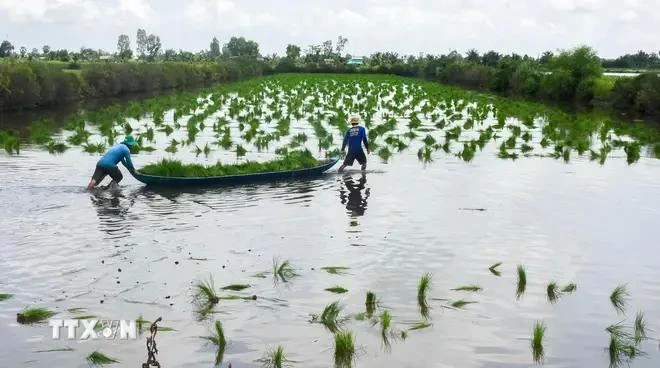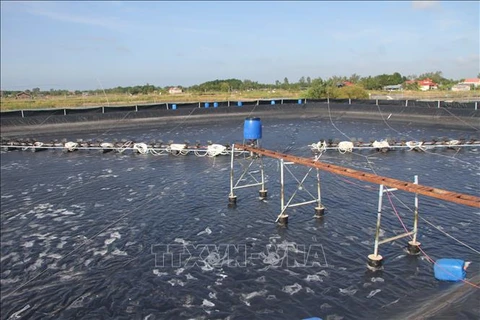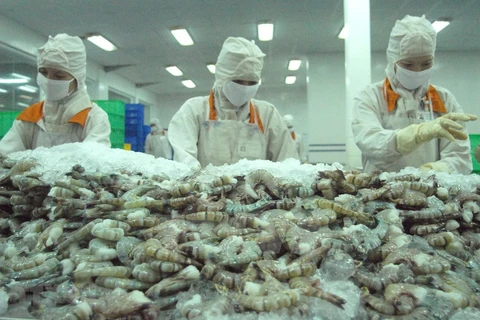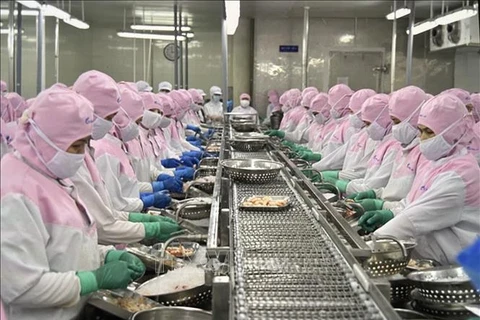
Ca Mau (VNA) – The southernmost province of Ca Mau recently approved a plan to develop the shrimp industry for 2021 - 2030, with a vision to 2050, aiming to turn the local sector into the largest in the Mekong Delta and Vietnam as a whole.
The provincial People’s Committee said that in this plan, suitable production models applying advanced technology will be promoted to improve productivity, output, and quality, helping enhance shrimp products’ competitiveness, adapt to climate change, and protect the environment to benefit farmers, businesses, and the economy.
Ca Mau eyes 1.4 billion USD in shrimp exports by 2025, about 1.65 billion USD by 2030, and 6 billion USD by 2050.
An estimated 20 trillion VND (over 785 million USD) is needed for developing the industry by 2030.
The plan also includes detailed criteria for selecting zones suitable for each form of farming to sustainably develop the shrimp industry.

Besides, Ca Mau devised a plan to enhance the aquatic processing capacity by boosting modern technology application with the aim of raising the volume of processed products to 176,000 tonnes by 2030.
In particular, it is set to restructure aquatic products to raise the proportion of those with added value to 75 - 80% and reduce the share of semi-processed ones to less than 20 - 25%.
The province will maintain traditional markets and explore new and potential ones. It targets that by 2030, shipments to the EU will account for some 17% of its aquatic export turnover, Japan 20%, the US 20%, and China and other markets 43%.
Data from the Vietnam Fisheries Society show that shrimp has been a staple of the country’s fisheries sector as well as agriculture for many years. Each year, it generates nearly 4 billion USD in overseas shipments and contributes to about 45 - 50% of total aquatic exports.
Vietnam is currently one of the four biggest shrimp producers in the world, together with Ecuador, India, and Indonesia. Ca Mau boasts the largest shrimp farming area – about 280,000ha compared to its total aquaculture area of 303,000ha, and an estimated output of 243,000 tonnes./.






















